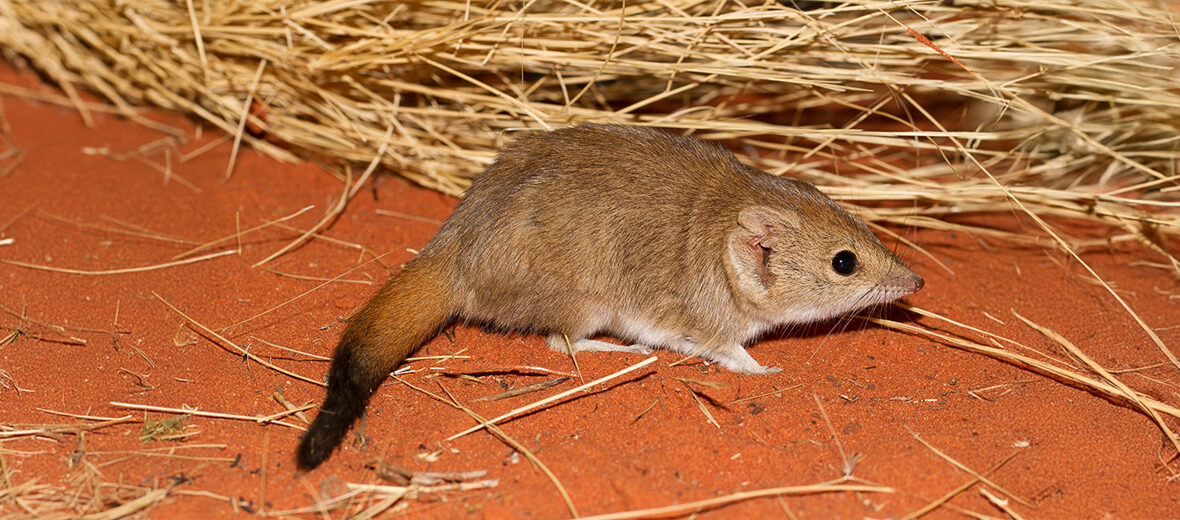
The crest-tailed mulgura hails from central Australia and is a small to medium-sized carnivorous marsupial that belongs to the Dasyuridae family. Other members of this family are quolls, dunnarts, numbats, Tasmanian devils, and the extinct thylacine. These marsupials face the threats of habitat loss and destruction at the hands of farming, ranching, fires, and inappropriate fire management regimens; as well as invasive species, that can bring about predation and competition for food. The IUCN lists these marsupials as Near Threatened, but with a stable population.
First the Stats…
Scientific name: Dasycercus cristicauda
Weight: Up to 6.5 ounces
Length: Up to 8.7 inches, plus up to a 5.1 inch tail
Lifespan: Up to 5 years
Now on to the Facts!
1.) These critters were first described by Gerard Krefft in 1867. He initially named them Chaetocercus cristicauda. Later, in 1988, Mahoney and Ride placed all 3 species, including D. cristicauda, D. hillieri, and D. blythi, into the synonymy of D. cristicauda.
2.) Dr. Patricia Woolley is most recently credited with resolving the taxonomic status of the crest-tailed mulgara in 2005. Her research, based on morphological and genetic evidence, established that there are 2 distinct mulgara species: the crest-tailed mulgara and the brush-tailed mulgara.
3.) They prefer crest and slope habitats consisting of sand ridges, or near salt lakes.
4.) Insects, arachnids, rodents, reptiles, centipedes, and even smaller marsupials are all preyed on.
5.) Breeding season lasts from winter to early summer.
But wait, there’s more on the crest-tailed mulgura!
6.) Females undergo up to a 38 day gestation (pregnancy) that yields up to 8 joeys.
7.) These marsupials waere presumed to be extirpated in New South Wales for more than a 100 years, but were re-discovered in 2017 in Sturt National Park north-west of Tibooburra.
Did you know…?
As of 2014, there were an estimated 18,000 individuals. As of late, that number is unknown.
8.) Red foxes and feral cats both prey on these marsupials.
9.) They also face the threat of habitat homogenization which is attributed to grazing from livestock and even introduced European rabbits.
10.) However, during post-release of rabbit hemorrhagic disease virus (RHDV), these mulgaras underwent a 70-fold increase in their extent of occurrence and a 20-fold increase in their area of occupancy.
Now a Short Crest-Tailed Mulgura Video!
Be sure to share & comment below! Also, check out the Critter Science YouTube channel. Videos added regularly!

Want to suggest a critter for me to write about? Let me know here.
Some source material acquired from: Wikipedia & IUCN
Photo credit: Intortuz



